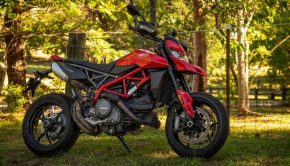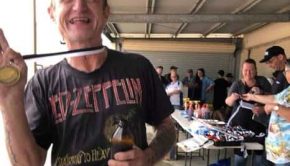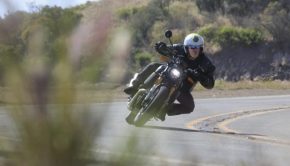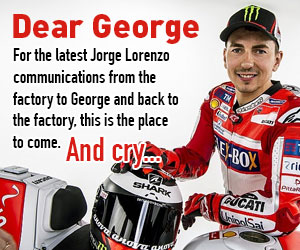NOTHING SUCCEEDED LIKE THIS XS250
By Bedlam
I was young, poor and desperate. It was cheap and available. Thus does my early love life dovetail beautifully with my first roadbike.
A young bloke’s first affair should be something special. It can be expected to have elements of awkwardness, but the memories that linger should be sweet and affectionate. Not so with the first chapter of my long affair with motorcycling.
Having recently finished high school and left home, it was a natural step for me to get a bike. I’d grown up with motorbikes on the family farm, but had never so much as sat on a road bike. Long before the advent of LAMS, we fledgling motorcyclists were limited to bikes of 250cc or less. But in a country town with no traffic congestion, surrounded by endless highways, there weren’t many used 250s around to choose from.
Being a young, casual worker also meant finances were tight. Especially considering a decent portion of my wage went directly to the Courthouse Hotel, whose front bar was 96 steps from the front door of the house I shared with two mates. The scope of motorcycles available to me was therefore limited.
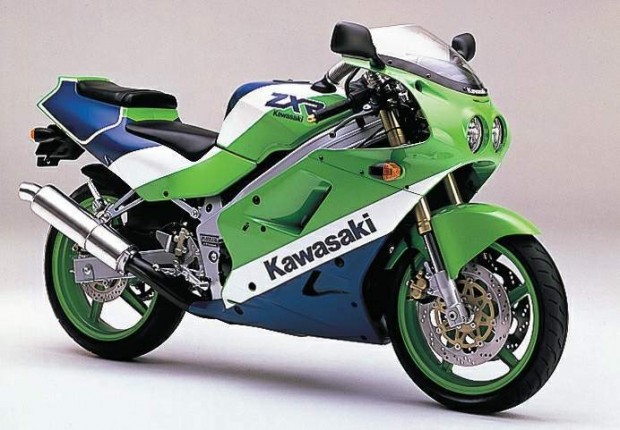
“See this? Well, you can’t have it, you povo twat!”
Over a few weeks I test rode different bikes at the local Yamaha/Suzuki/Kawasaki dealer, mainly XTs, DRs and KLRs. I did my best to convince the salesbloke to get a ZXR250 in for me to try, but he refused because we both knew I couldn’t afford it. Instead I developed a fondness for a used CBX250 he had on the floor.
It was small, light and fairly responsive, but still outside my budget. I liked it so much I convinced my father to come and look at it with me in the hope he might take pity on me and contribute to the bike fund. That didn’t go to plan. When the salesbloke suggested I ride it again to convince myself, Dad advised salesbloke that I didn’t have a licence and he shouldn’t be letting me fucking ride it.
Salesbloke then suggested I should depart the store and not return until I had a fucking licence. I still don’t understand his response. I’d ridden half a dozen of his bikes by that stage and they’d all come back in one piece.
With the CBX off the table, and being persona non-grata at the bike shop, things looked bleak. Then a mate of a mate told me he had another mate whose uncle knew of a bloke with an old 250 for sale, cheap. I took the bait and was directed to see an old bloke called Merv.
Merv was an auto electrician who worked from a tin shed out the back of a grimy servo on the highway. His shed/office/workshop was an enormous dumping ground for electrical equipment, a Tardis of electrical parts, alternators, generators, regulators and electrical wiring.
When I asked about the 250, Merv reached into that pile, and wheeled out a motorcycle. And I beheld the 1979 Yamaha XS250 Merv had produced.

There’s an XS250 in there, for sure!
“It’s not the newest motorbike out there, or the fastest,” Merv understated.
“That’s alright” I assured him. “I can’t afford the newest bike out there.”
I looked it over and gave an examining kick to the back tyre. Merv proudly directed my attention to the blinker, where he’d fitted a horn to the indicator. “Stops you leaving the blinkers on while you’re riding around,” he advised, and promptly activated it. I reeled back in alarm.
The noise was fucking hideous; some sound between an alarm clock and a goat being stabbed wailed out unison with both blinkers. Merv switched it off, but it rang in my ears and something inside me was probably bleeding. I vowed that if I bought the bike my first act would be to smash that thing with a hammer.

“Hamid, did you press the Record button on the motorcycle?”
“Wanna a ride it”? Merv asked.
“Haven’t got a licence.”
“I’m not a pleeceman”.
So I chucked my helmet on, and around the block I went. The XS had a lethargy under acceleration that was absent in the CBX, but it otherwise seemed OK.
When I got back I handed Merv $550. He handed me a grease-smeared rego paper, and I rode it home. An hour later I rode it up to the TAFE, parked it around the corner out of sight, and did the Learners course in the TAFE carpark. By lunchtime that Monday I had L plates to put on it.
The XS and I then spent the next few days getting to know each other. In essence, it was just a relationship that never took off. Its performance was never going to satisfy a 19-year-old. It was capable of the fundamentals: it accelerated; it turned; it stopped. It just couldn’t do any two of those things together.
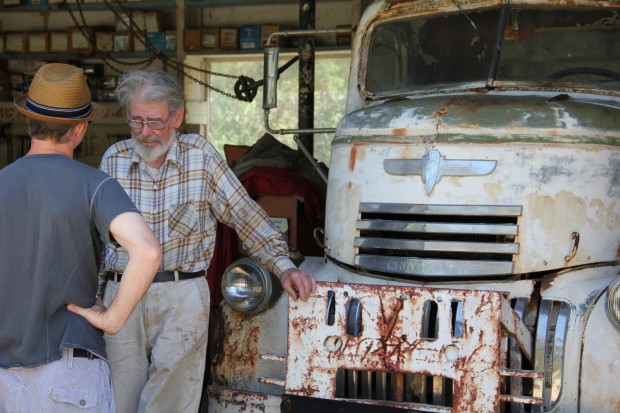
“i can throw in the truck too, if you like”
As you’d expect from a young bloke recently having come into possession of a motorbike and legal authority to ride it, I spent every spare minute on the XS. Familiarity didn’t improve our relationship though, and riding it brought far more frustration than satisfaction. To be blunt, it handled like a pig. I’d operated more agricultural machinery than roadbikes at that stage, and this thing felt more like a tractor than a bike.
The motor felt and sounded solid, but was so sluggish you’d go to sleep waiting for it to reach 100km/h. If it could reach 100km/h. I had a four-stroke lawn mower at the time, and its throttle response put the XS to shame.
The only thing you couldn’t complain about was the road feel. Because there was none. I knew the handlebars I clung to were connected to shock absorbers, which were themselves connected to a wheel and tyre. I had seen that when Merv first wheeled it out. And I could even lean forward and see that those things were there while I was riding. The problem was there was no indication of that through the handlebars, and no feedback from the road whatsoever.
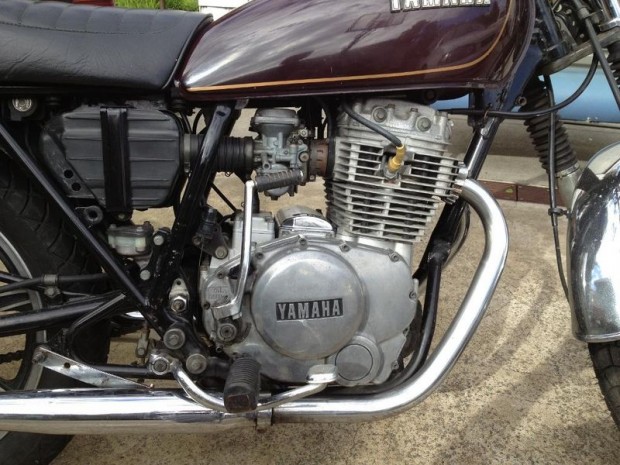
How could anyone resist the power and the glory?
It made cornering a lottery because there was no warning about the limit of adhesion, so leaning the bike into a corner (and describing the XS as capable of leaning is being over-generous) was a tentative, gut-lurching exercise. Plus the murderous goat-screaming rang out over the engine noise every time I hit the blinker switch, traumatising me every time I approached a turn. I still hadn’t got around to deactivating the bloody thing.
Put simply, the bike steered like a wheelbarrow. The seating position was comfortable for a 250cc machine, but Yamaha hadn’t given a lot of attention to making the bike handle. Considering its four cylinders amounted to only a quarter of a litre, the engine block was huge, and its weight was never going to assist the performance of the bike.
That weight was slung low, and at standstill the bike had a low centre of gravity. Yet when leaned into a corner, the centre of gravity felt much higher. The weight felt awkward and poorly balanced. Fuck, it just felt heavy everywhere. In fairness, the tyres were old and stuffed, and probably a considerable contributor to the terrible handling.
They were very probably the tyres that were fitted in Japan before the bike was loaded onto a ship in 1979, but the process of bike purchase, registration and licencing had just disposed of all of my disposable income, so they stayed where they were.
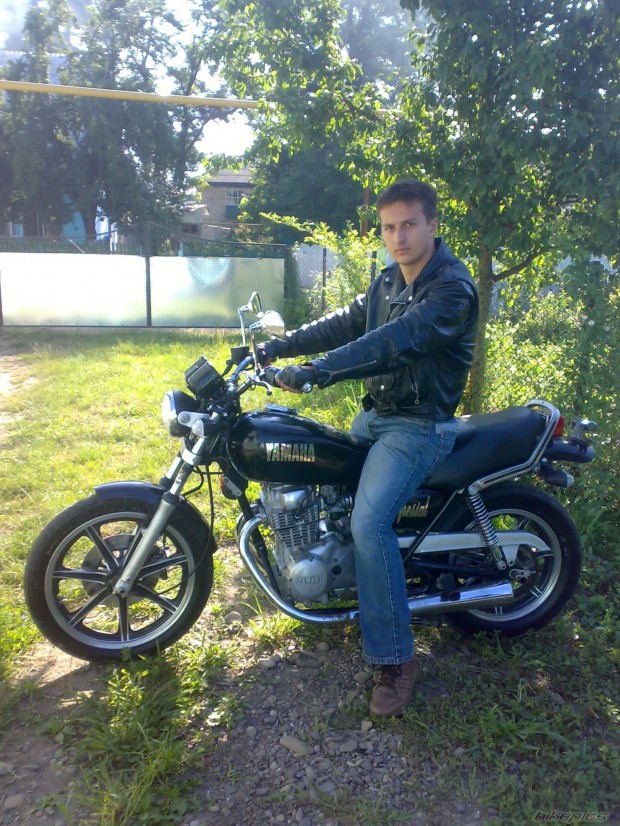
Not Bedlam, but the pride of ownership is the same
Familiarity didn’t seem to improve my relationship with the bike. I rode it everywhere, around town, the open highway, and the few decent twisty roads in the area, but the result was always the same. Beyond the fundamental pleasure of being on a bike, it just wasn’t a pleasant bike to ride.
Negotiating a corner was a process that involved rolling off the throttle, letting the bike fall into the corner, waiting until the front-end came around to where you wanted it, then re-opening the throttle and to using the paltry power to lift the bike up and continue.
I rode it to the family farm, 60kms out of town. On the five km dirt section, it became apparent that the bike was just as capable on dirt as it was on bitumen. That is to say it had no less road feel on dirt than it did on the highway. When I arrived at home, I parked the bike on firm ground where a hundred dirtbikes, farmbikes, cars and tractors had been parked over the years. I’d barely taken three steps away from it when I heard it crash to the ground, the Bismarck-like weight on the bike’s sidestand too much for the ground to bear.
As I picked the bike up, fresh from an uninspiring, hour-long ride, I felt the last of my remaining affection evaporating.
It had been an intense few days, but I’d owned the bike less than a week and was already working on an exit strategy.
The final nail was clubbed into the bike’s coffin one rain-soaked April Friday. On a dirtbike, I’d always loved riding in the wet when the earth softens, traction is reduced, and your reflexes need to be at their sharpest. On the deplorable XS250, wet riding was a just a nightmare.
In a reasonably heavy autumnal storm, the shortcomings of the bike were demonstrated to me with big, bright warning lights in case I was too stupid to see the obvious. For a mere 20 minutes I rode through the rain on a very wet road with no indication whatsoever that the bike was in any way connected with the roadway.
Cornering involved the usual process, though at greatly reduced speed, and I spent the journey pointing the bike at a corner with no real idea whether it and I would still be upright on the other side.

“Come here, XS250. Let me kill you with wetness.”
Nineteen, and still too young and stupid to feel fear, I began to feel that the XS would happily throw me down the wet road, or under a truck, without any warning. Once that distrust set in, the relationship was doomed.
On Saturday morning, exactly a week since Merv had introduced me to Yamaha’s shame, I was back at the dealer kicking the tyres of a belt-driven Kawasaki GPZ250. I had to show my licence before I was allowed to ride it this time, but when I did, it did everything I expected a learner-legal bike to do.
The salesbloke, with far superior bike knowledge to myself, recognised the XS for exactly what it was, a pile of shit, and refused to trade it. He eventually relented and offered me 500 bucks. Having paid $550 for it a week prior, plus the rego transfer, oil change I’d done on Sunday, and the service manual I bought for it, it hadn’t been a cheap week of riding.
But I was glad to see the back of that abomination and cut my losses. I paid a deposit on the GPZ and we agreed that I’d keep the XS for a week until payday, whereupon I’d produce more cash and swap them.
the Yamaha XS250 and its associated performance was best described as dissatisfying, but that probably says more about my expectations than the practicality of the bike. At the time I knew a truckie who had the same model bike. Only bike he’d ever owned, and bought for the sole purpose of riding to the depot at four am to pick up his truck. He never rode it recreationally and loved the reliability of it. Maybe the middle-aged country commuter was Yamaha’s target market. It certainly wasn’t produced for the teenage wannabe GP rider.
Were there positive aspects to the experience? Fuck yes. When you’re young or inexperienced you can learn more from a bad bike than a good one. A good bike makes basic riding effortless. But there is nothing to be learnt in that.
The XS250, on the other hand, taught me plenty. It made me focus completely on my riding and my actions than a newer, friendlier bike would have. It taught me to concentrate on the bike’s responses and feel the road. It demanded that I wasn’t complacent. These are things that have kept me from becoming a motorcycling statistic in the years since. Riding it in comparison to the newer generation of learner-legal bikes available in the 90s was like the difference between using a paper and pencil to do maths, or just punching numbers into a calculator, ie. you got the same result, but the XS made you do all your own working out. And in the end you understood more about how you got the answer. But it still made you want a calculator really, really bad.

What glory awaited him had he started customising it…
The following Friday I rid myself of the cursed XS250 and took delivery of the GPZ. I had three-and-a-half hours exhilarating hours of ownership of that before I wrote it off and had soggy hospital sandwiches for dinner. But that’s another story…



